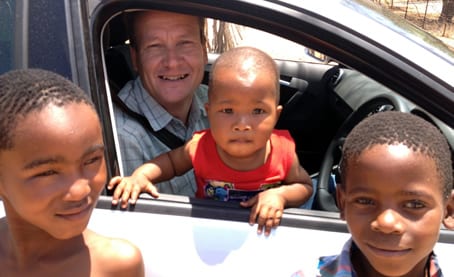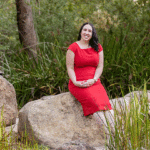 A Curtin University team is helping locals in a small village in Botswana by empowering them with knowledge to use vegetation and land information to advance their lives.
A Curtin University team is helping locals in a small village in Botswana by empowering them with knowledge to use vegetation and land information to advance their lives.
Professor Bert Veenendaal, Head of the Department of Spatial Sciences, has recently returned from Tshane, a village of 1,500 people in the Kalahari Desert, where a participatory geographic information system (GIS) teaching and development program was implemented five years ago.
“At the time the program was implemented, none of the villagers had even seen a computer,” Professor Veenendaal said.
“The rural community has since used the GIS system and learnt modern business practices via spatial information and communication technology (ICT) and the knowledge has enabled individuals and groups in the village to bridge the gap between themselves and larger regional centres, thus improving their standard of living.
“The program is all about empowering Tshane villagers and giving them the knowledge to use vegetation and land information to make decisions and develop their community.”
As a result of the Curtin program, the community established the Mashego a Lobu (“Blessings of the Pan”) Knowledge Centre, which has assisted more than 20 development projects initiated by people in the village.
Satellite imagery and community mapping of the village has assisted locals in improving animal husbandry practices, upgrading their homes, improving access to water and power, establishing their own businesses in construction and farming, and accessing competitive government funding for poverty alleviation and community development.
“It is pleasing to see the change in the villagers’ lives. As well as learning the systems, locals have taken their new knowledge and applied it to develop business plans to progress their livelihoods,” he said.
“One local woman originally had about 18 goats which she was selling for money. Now, three years later, she has used her newly-acquired knowledge to manage a herd of more than 50 goats, to graze them to good health and sell them on a schedule, thus running the herd as a successful business.
“Another major project resulting from the program is the development of an 11 kilometre water pipeline allowing animals to access water away from the main town centre, thus decreasing the degradation of valuable village land.”
Professor Veenendaal has recently applied for a grant to fly 12 of the Tshane villagers to Western Australia so they can undertake further studies about how to best manage their land and resources to the benefit of the village community.
Contact:
Professor Bert Veenendaal, Head of Department of Spatial Sciences, Curtin University
Tel: 08 9266 7565, Email: B.Veenendaal@curtin.edu.au
Megan Meates, Public Relations, Curtin University
Tel: 08 9266 4241, Email: megan.meates@curtin.edu.au



